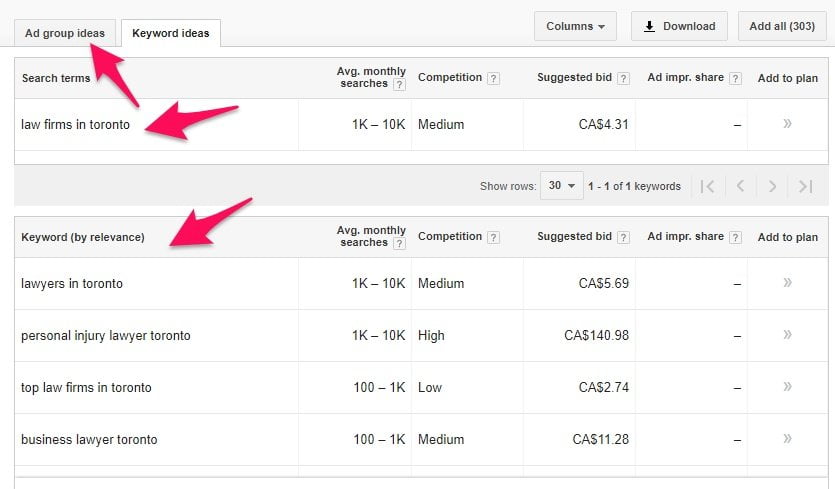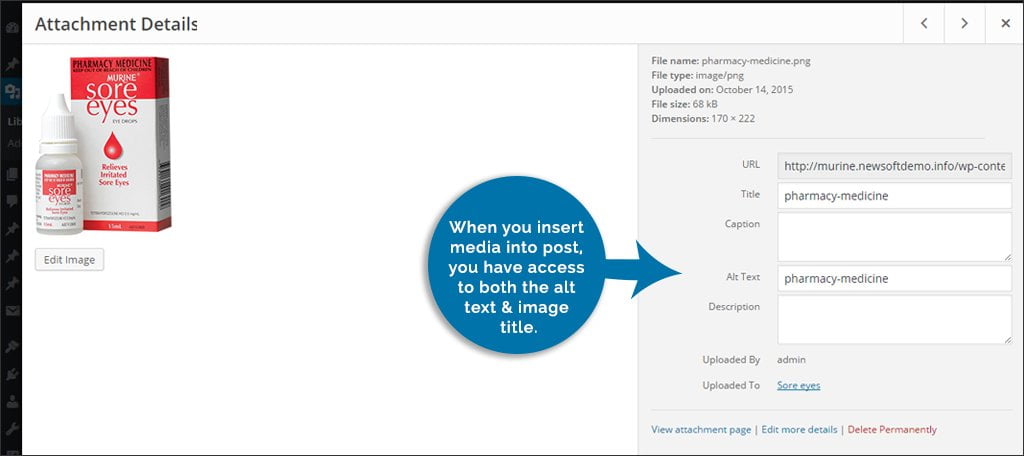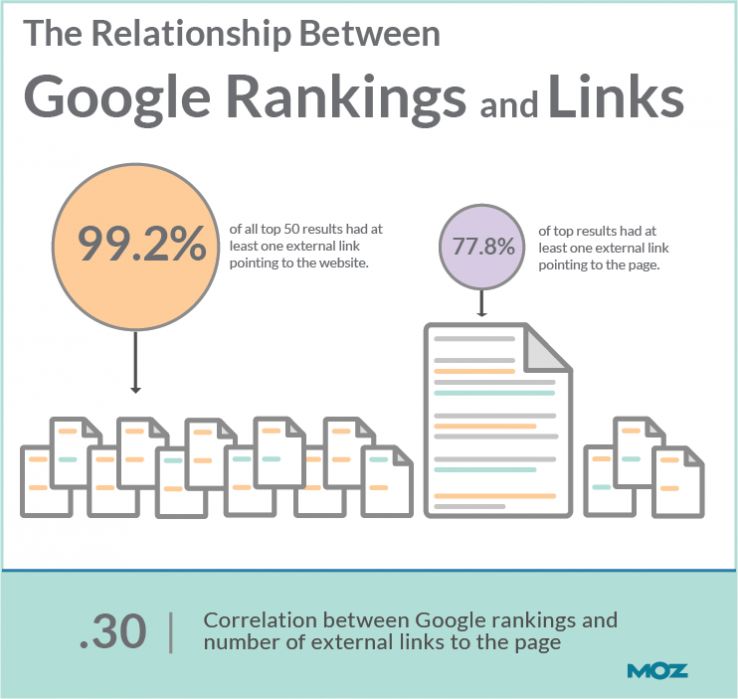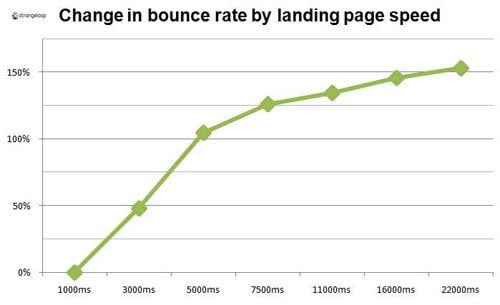74% of all legal clients will visit a law firm’s website to take action.
Is your website up to date? Or is it outdated and hard to use?
You’re missing out on clients and marketing your law firm better than competing firms if you’re not strategic about it.
I’ve worked with many legal clients and helped them grow through content marketing, SEO, and other strategies.
Do you want to learn how to properly market your firm to get more leads?
Then keep reading.
Law firm SEO
SEO can sound scary.
Optimization? Keywords? What the heck are those?
Seeing as 51% of all website traffic comes from organic searches, having good SEO will bring in a steady trickle of clients over time.
Search engine optimization for lawyers is pretty straight forward when you break it down. I’m going to show you how to do it, step by step.
It’s all in the keywords
Imagine you’re a lawyer from Toronto. Your average client may be searching for keywords such as:
- Toronto lawyer
- Toronto law firm
- Toronto accident lawyer
Wouldn’t it be nice to appear on the first page for these keywords on Google? With proper optimization, it’s very achievable.
And 75% of users will never visit the second page, meaning you don’t want good SEO, you want great SEO.

But, many law firms don’t have great SEO. They’re missing out on attracting clients and getting more business.
Don’t be one of them.
I’ve recommended it many times, but Google’s Keyword Planner is a staple for any SEO practitioner. It’s free and you can sign up for an account here.
Alternatively, get a free seven day trial for SEMrush Pro.
Personally, I’m a fan of the original keyword planner so I’ll scroll down to the bottom and choose it instead.

Next, you need to enter a search term to gather data on and to get other ideas.
I’d also recommend changing the location to your country if you’re targeting local keywords. There’s nothing stopping you from gaining international clients but it makes more sense to gain local traffic first.

Select “Get Ideas” and it will bring you to the results page. Here we can see a few things:
- Stats about the keyword you entered
- Related keywords and their stats
- “Ad group ideas” which groups similar keywords

Many of these search terms have thousands of people using them every month.
Imagine you had just 1,000 of them coming to your website and you converted at a rate of 1%. That’s 10 new clients every month from a single search term.
You can either write down related keywords in a Doc file or just download them to a spreadsheet from the keyword planner itself.

But, where do you place these keywords?
In a few different areas of your website.
The first being within the title tag.

On the search engine results page, the title tag appears as the top line of text above your URL and description. Placing a keyword here will help you rank for it and attract the right audience.
Changing it depends on the exact platform you use to host your website. For example, I use WordPress and the Yoast SEO plugin is the simplest way to adjust title tags.
If you’re on WordPress and have Yoast like me, navigate to your pages tab.

Selecting your home page, scroll down to the edit snippet section and select it.

Enter your keyword into the title section and you’re good to go! Yoast shows a progress bar that you’ll want to get into the green so it’s a good length.

But wait, you’re not done. The next area to place your keywords is in the meta description, just below.

You want to naturally implement your keywords and make them not appear forced. Other areas to include them are:
- Your about page
- Your home page
- Your services page
When you upload images to your website, you also want to edit the alt text to include a keyword.
Have you ever hovered over an image and text popped up describing it? That is alt text.

The purpose of it is to describe an image if it can’t load or to be read by software for the hearing impaired.
Google scans your images for alt text to better understand what they are and it has an important role for SEO. It’s a key component for ranking and also improving the user experience.
For WordPress users, you can do this as soon as you upload a new image.

Similar to the alt text, also ensure that when you save an image, it has a file name that is both easy to read and includes a keyword. Google also looks for this when indexing images and understanding what your pages are about.
Building your link profile
Without backlinks, your website won’t rank. And if it doesn’t rank, you don’t get clients or traffic.
Backlinks are simply websites that link to yours. Normally it’s because you’re a good resource for their audience.

Moz found that most of the top results on Google have external backlinks pointing to them. Links are important to search engines as it shows your website is popular among other sites. Plain and simple.
How do you build backlinks? In many ways, I’ll show you some effective techniques I still use to this day and have taught clients.
Guest posting
A timeless strategy that will probably never go out of style.
And, a guest post is exactly what it sounds like. You post on another website as a guest.
In return, you’ll receive a backlink in the author block or somewhere in the body of the article.
But guest posting is so much more valuable than that. You’ll establish yourself as an authority and expand how many people are exposed to your business.
Guest posting will also drive referral traffic to your law firms website which in itself could convert to clients.
It’s super easy to do, as well. Take a quick visit to Google and search for phrases such as:
- Legal guest post
- Legal contribute
- Legal guest post guidelines

Right away there are guest posting opportunities. Visit these websites and read their guidelines. These typically include:
- Word count
- Rules about internal/external linking
- Tone of voice
If you believe they are a good fit, send them a pitch like below.

The key is to talk about how it will benefit their website, such as a traffic increase or appealing to their readers. As well, make sure that you have pitch a few topic ideas for them to choose from.
If all goes well, they will approve one of your ideas and you can begin writing. It’s usually delivered as a Doc file or through Google Drive.
To learn many other ways to build high quality links, check out my full guide here.
Speed up your website
Have you ever been on a slow website? You probably became frustrated and eventually left in search for another one.
You want to avoid giving that experience to your audience. It’s been proven that the longer a page takes to load, the higher the bounce rate increases.

And guess what? Page speed also affects your search engine rankings. And once you speed up your website, you don’t have to touch it again.
It should be a basic component of any lawyer SEO strategy, so here’s how to do it.
Optimize your image file size
You’ve learned to optimize the alt text of images, now let’s look at compression.
This is the process of reducing the file size of an image without sacrificing the quality. It helps boost page speed as you don’t have bulky images taking forever to load.
To compression an image for free, visit Compress Jpeg.

Drag and drop images into the browser or upload the from a folder.
You can then download the newly compressed versions right from the website. It even tells you how much file size you saved.

Cache your pages
Imagine how much work your browser and internet connection has to do every time it loads a page. It’d be nice if it could remember how a website looked and store it in its memory for later use.
Well, it’s possible. And it’s called caching.
If your website uses a caching service, it can help help improve your SEO as your site will be quicker.
I recommend using Cloudflare as they have a free plan which includes caching, an SSL, DDoS mitigation ,and more.

Upgrade your hosting
Do you use a web host like Hostgator or Bluehost? The package you choose will have a direct impact on your websites speed.
Shared hosting is the most common and affordable option for hosting. Unfortunately since you’re website is on the same server as many other customers, it will normally be slower.

The best hosting packages for page speed are:
- Cloud
- VPS
- Dedicated
Cloud hosting syndicates your website onto cloud servers, so even if it were to go down, a live version would be available. A.K.A, you get great up-time and it speeds up performance.
VPS stands for virtual private server. It’s a bit more costly but gives you your own private server to host websites on. Similarly, dedicated hosting devotes a single server for one website.
Both feature fast page speed, security, and resources.
Content marketing for law firms and lawyers
It use to be all about going to the customer.
Print ads, television ads, and other intrusive forms of marketing we’re the go-to for all businesses. Even today, so many firms rely on these strategies to gain clients.
In 2018 and beyond, you should focus on having the clients come to you. You’ve already learned about SEO and now it’s time to grasp legal content writing.

Users will trust you more and feel more positive about your firm if you post content on a regular basis.
It shows that you care about your audience and want to teach them useful information. Content marketing also creates the opportunity to show you really know your stuff.
You become a thought leader and gain credibility. Prospects will be able to see that you’re a knowledgeable and experienced attorney through the in-depth content you offer.
And you know what sucks?
I barely see any firms or attorneys regularly creating content. I’m sure referrals are a great source of revenue for them, and maybe yourself, but content marketing let’s you take control of your destiny.
Content marketing costs 62% less than outbound approaches and generates up to 3 times more leads, as well. Don’t you want in on that?
I’ll teach you how. No matter if your website is with WordPress, Wix, Weebly, or another CMS, below all still applies.
What are the pain points of your clients?
Every business solves a pain point and content marketing revolves around that. You need to help them solve a problem through your content.
So, take the time to brainstorm:
- What questions they are asking
- What they are struggling with
- Their demographics like income, values, and interests
All of this helps create a customer persona. A general idea of who you’re targeting that you can craft content around.

Based on your previous clients, fill out a template like the one above.
Once you’ve done this, it’s time to get writing. I’ll use a previous article of mine as an example.
How to write great content

This article centers around helping entrepreneurs from various industries gain more clients. What do you think the pain point is?
A lack of clients, of course. Or, a lack of concrete strategies for acquiring them.
Note that the photo has excited and smiling people that the reader can see themselves being as a result of having more clients. Just a quick photo marketing tip.

Moving on, the intro targets the pain point in the opening sentence. I mention that I’ve been there myself, which is true, and I hint to what to expect in the article. Try mixing in your own stories or experiences like this.
Short sentences are easy to read so try to avoid long paragraphs, you’re not writing a newspaper column. Unless you are, then ignore what I just said.

You want to use headers to break up your article into digestible pieces. I like using H1 tags for the main points and H2 tags for any sub-points.
Including charts/graphs makes content more visually appealing, backs up your statements, and provides meaningful data.

Do you notice how even in this article I provide step-by-step instructions? If possible, because it’s topic-dependent, include steps to complete tasks you’re writing about.
For example, let’s say your topic is on preparing documents for a lawyer. Show step-by-step how to collect information, what tools to use, and provide templates/examples.
Make it as easy as possible for them.
Next up, word count.

It matters.
Nobody wants to read a dinky article that’s 500 words, has no images, and isn’t formatted.
So, focus on achieving a word count towards 2,000. Backlinko analyzed 1 million different search results and found that the #1 position tends to be around this many words.
And it makes sense.
Search engines want to display valuable content to users and longer content packs a bigger punch.
Trust me, once you’re finished writing that article there’s no better feeling in the world. You know that it’s going to drive traffic, get you clients, and make your audience happy.
Remember the keyword research you did? Make sure to base your articles around specific keywords and the Keyword Planner from Google will be your best friend for this.
When writing content, place keywords in:
- The title and URL
- Header tags
- Through out the body
- As alt text for images
Don’t over-do it, that’s called keyword stuffing. Keep it natural and use a tool like this density checker from Smallsetools.

Copy and paste the text of your post into the tool and hit check.

It will display which words are being used the most. On average, it’s good to have a single keywords anywhere from 2-5 times throughout an article.
Here’s a quick summary of what makes great content:
- A word count around 2,000 or more
- Graphs, images, and charts
- Data and numbers to back up claims or give examples
- Formatting with headers, lists, and bullet points
- Answering the questions of your audience and addressing pain points
- Tools, resources, and step-by-step instructions
Networking events for lawyers
It’s not what you know, it’s who you know.
So a key component of your law firm marketing strategy should be to take advantage of networking events.
You can meet like minded people, find clients, and spread your name around the local area. This can lead to referrals and others mentioning your practice through word of mouth.
One in four people don’t network, are you guilty of this?
It’s much easier and less time consuming than you think. If you still don’t think you have the time, you can always send representatives or employees to network on behalf of your firm.
Where do you find events to network at? I’d suggest taking a look at Meetup.com, it’s highly underrated.

Bake a good reputationut, here’s the thing.
If you’re from a small town, odds are there’s probabaly not many groups or meetups. Let alone very active and large ones.
I come from a town of about 80,000 people and there’s very little meetups going on. An hour or two away in the big city, though? Tons!
Don’t be afraid to commute to network because it can heavily pay off.
What kind of events should a law firm or attorney take part in? Here are some ideas:
- General
- Business
- Legal related
- Career
Once you’ve found some events that you’d like to attend, make sure to dress the part. Wear a fitted suit or other business attire, a nice watch, and sharp dress shoes. Your appearance will represent your firm and first impressions mean everything.
Never come empty handed, either. What I mean by this is come with business cards but don’t be the guy throwing them around like a maniac. Only give them out when it makes sense.
Besides that, I recommend being consistent in the conferences you attend to make a good reputation and for building relationships over time.
Final thoughts on law firm marketing
Legal marketing doesn’t have to be difficult. You just have to take advantage of inbound and outbound approaches while being patient.
If you’re online, which you should be in 2018, you need to have an SEO strategy first and foremost. Research keywords related to your service and city using Google’s Keyword Planner.
Place these on relevant pages and pieces of content in a natural way. It will help Google and other search engines understand what your website is about, attracting relevant users.
From there, pair your on-page SEO strategy with an off-page plan for building backlinks. Guest posting is the easiest way to begin and also leads to referral traffic. You can check out my previous post on building links for more ideas.
But, SEO doesn’t stop there. You need a fast web site, optimized image files, and caching to boost your rankings. It also helps make browsing your website more enjoyable.
Content marketing goes hand in hand with SEO and has a fantastic ROI. It drives organic traffic that can convert to clients and helps build your brand as a thought leader.
Focus blog posts, videos, or other content you create around pain points and questions your ideal client would have. Format it, include useful images, reach a high word count and you’ll be swimming in organic traffic.
Lastly, you can’t beat face to face networking. You never know who you will meet and it builds worth of mouth referrals. Research events you or a representative could attend using Meetup.com for your local area.
What do you think is the best way to market a law firm?














